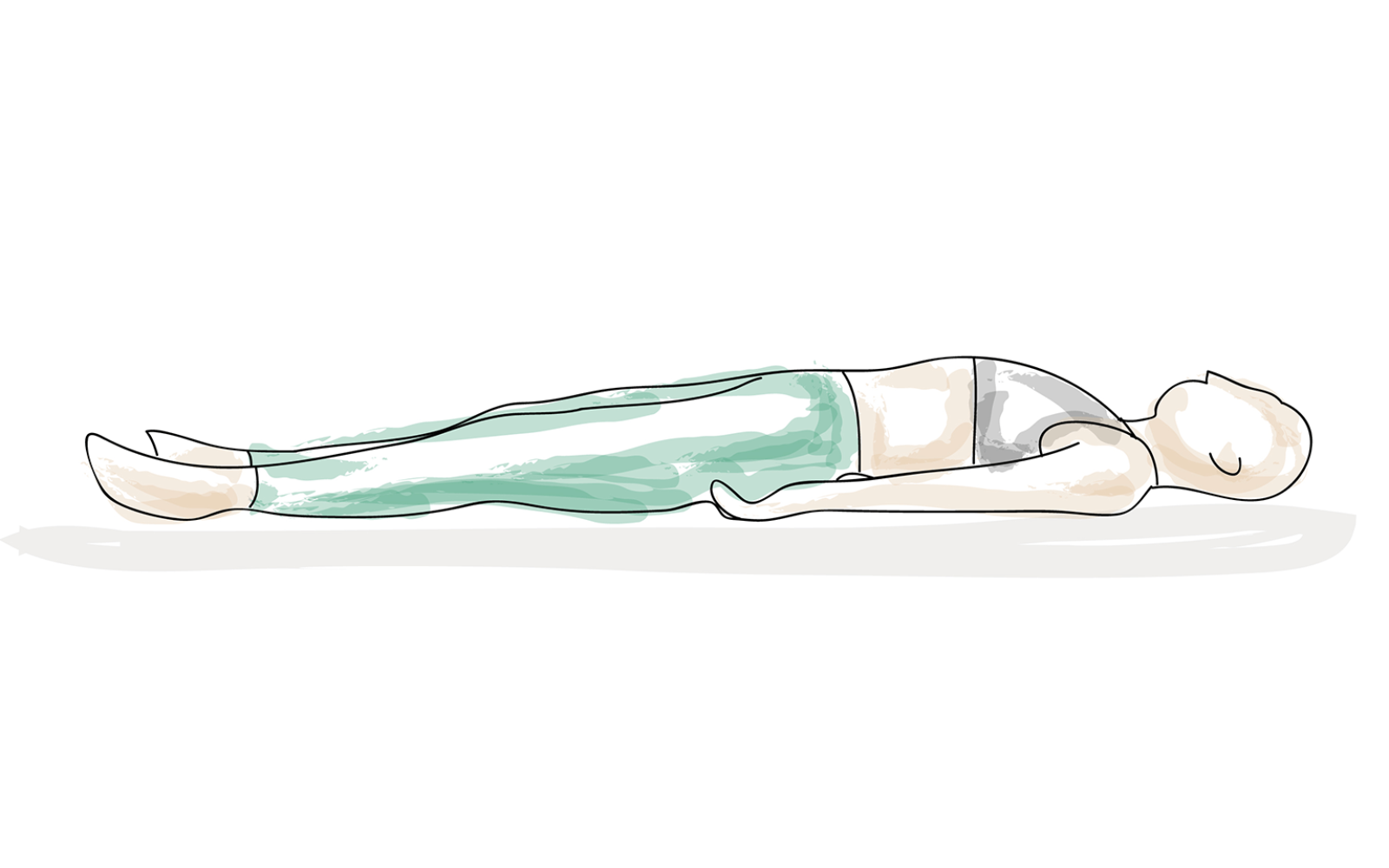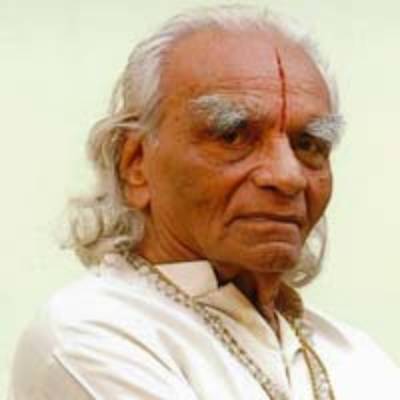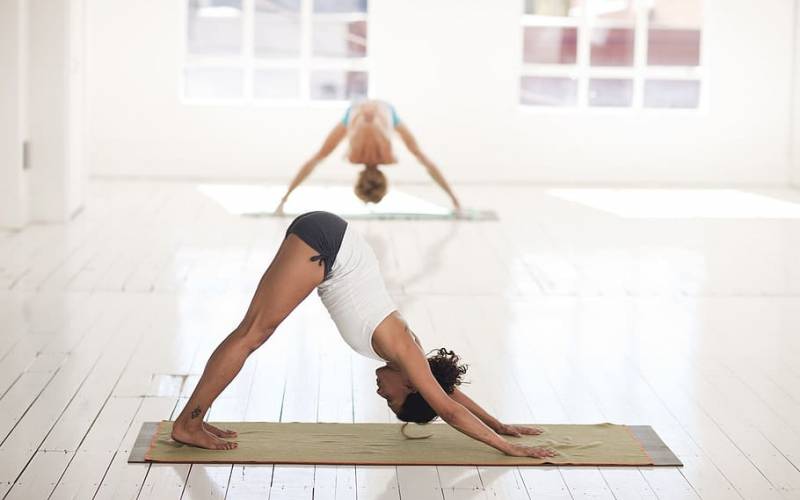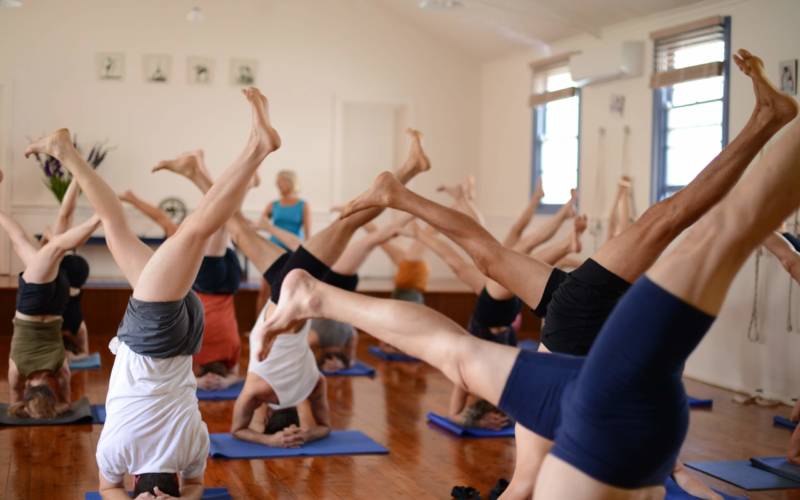The pace of modern life is such that its maintenance makes taking sedatives imperative for most people. As the giddy pace increases, tension builds up in our systems; our nerves get frayed, and haggard remnants of humanity are left to seek solace in some form of drugged sleep. This is strange, for a man now has all the leisure time at their disposal. Machines have taken the drudgery out of life and the forty-hour week gives man enough time to relax. The art of relaxation, however, eludes him, and it seems to be something past, beyond recall. Relaxation is necessary, for it is recuperative. The drain of energy has to be counteracted in some way.
The yogic art of relaxation known as Savasana precisely describes how relaxation and recuperation take place. Sava means corpse or dead body. Asana means a posture. Savasana is thus the posture emulating the dead, and out of death comes life. Savasana is not simply lying on one’s back with vacant gaze or flopping on a foam-rubber mattress. Savasana should not end in snoring. It is by far the most difficult of yogic asanas, but it also is by far the most rewarding and refreshing one. It is a very precise method of disciplining both the body and the mind.
Art of Lying Down for Savasana
Savasana begins with placing the body accurately on the floor.
The place for this should be even, clean and free of insects, loud noises, and noxious smells. Spread a blanket or a rug on the floor so that the body can lie full-length on it. These precautions are necessary because a cold or unclean floor can disturb the depth of relaxation.
Then, lie on the blanket with the knees drawn up and feet together, so that a line can be drawn from the place where the big toes meet, the inner knees meet, through the anus, the navel, the sternum (breast-bone), the throat, the chin, the bridge of the nose and the centre of the forehead. Gradually stretch one leg forward and then the other so that both legs lie in a straight line in the median plane. Both the buttocks should rest on the floor evenly on either side of the anus. If one buttock feels broader, place the hands on the floor on either side of the hips and lift the buttocks off the floor and adjust them. Slide backwards to rest on the elbows with palms on either side of the hips. In this position, adjust the buttocks again so that they lie evenly on either side of the coccyx and the anus. Then, make the spine convex and lower the body, vertebra by vertebra, to the floor so that the entire spine rests on the floor equally and does not tilt to one side or the other. The bottom points of the shoulder blades, like the buttocks and the hips, should rest evenly on the floor on either side of the spine.
Once the spine is placed on the floor, bend the arms and touch the shoulder with the fingers. In this position gently extend the back of the upper arm towards the elbow so that it is evenly elongated on the floor. Then lower the hands to the floor with palms facing upward, the median plane of the wrists resting on the floor. The arms and hands should form angles of not more than fifteen degrees with the sides of the body.
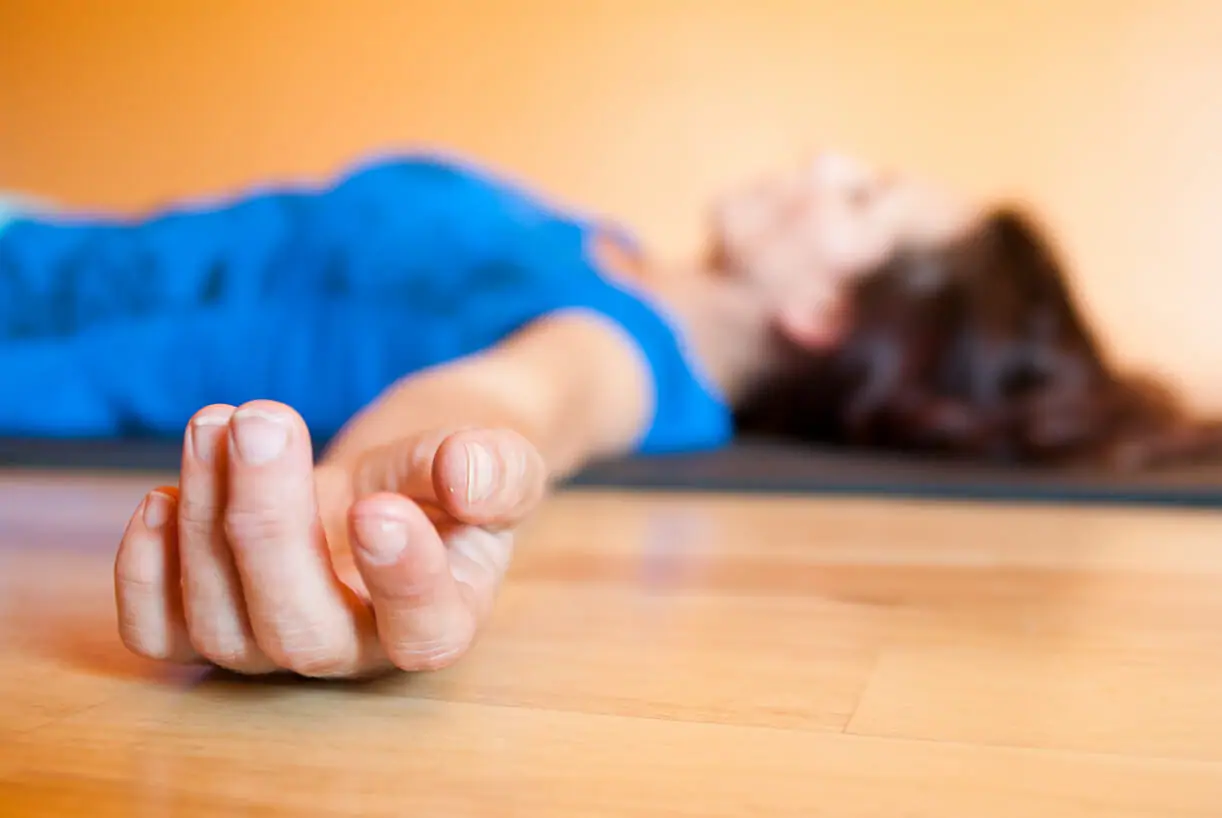
Unlike the rest of the body, which is adjusted from the back, the head should be adjusted from the front. Babies usually sleep with the head tilted towards one side. The back of the head in most people is misshapen and its centre is out of alignment because of the sleeping habits formed when they were babies. Hence the head should be adjusted from the face. The chin should be perpendicular to the ceiling and the floor, while the bridge of the nose should be parallel to the floor. The eyes should be kept shut and equidistant from the bridge of the nose. They should be directed away from the centre of the forehead. A squint and a puckered forehead are always signs of mental tension.
Consider each pore of the skin as a “conscious eye.” Delicately adjust and balance the body from within with the help of these conscious eyes, as it is difficult for the normal eyes to observe and rectify the body position.
Briefly, the entire body should be placed with precision on the floor so that the two halves of the body lie evenly on either side of the spine. Attention to detail and precision in the body position leads to mastery of the art of relaxation. Very often the body tilts to one side and this side tilt is experienced on the stronger side of the body. It varies from person to person. In some people, the right side of the body is stronger, in others, the left side of the body is stronger. The tilt is experienced as a sort of greater magnetic pull of the earth towards the stronger side of the body. Once the practitioner knows which is the dominant side of the body, that is the side exerting the greater magnetic pull to the floor. Thus the tilt is obviated. If the tilt occurs, there is a drain of energy in the direction of the tilt.
Recuperation is quick when the right and left halves of the body are evenly held in equilibrium and the energy is locked within the body.
Art of Controlling the Senses in Savasana
The next step in Savasana is the control of the senses, stilling their outward movement towards the objects of desire. Savasana is the descent of the body and the mind as a unit within itself toward the source of energy within oneself. Savasana is not a rigid state of stillness. Savasana when properly performed brings on a silent state of stillness which is divine. It is the surrender of one’s ego and the receptive awareness of the divinity locked within oneself. For the achievement of this state, the brain cells have to descend passively. The brain cells will not experience this descending movement if the senses are not controlled and have not learned to withdraw within themselves. Most of our organs of sense are located in the head. The entire struggle for control takes place on the face from the throat upward, where the impressions gathered by the senses are experienced. Savasana is said to be complete if the breath, the eyes, the eardrums, and the root of the tongue are all under control and relaxed. The beginner will observe that the eyelids will flicker and the eyeballs will move upwards. These are sure signs that the eyes are tense and that the brain is being disturbed by thought waves. The appearance of saliva in the mouth and the constant desire to swallow is an indication of tension in the tongue. Tension in the eardrums can also be experienced as tension around the ears. The beginner should consciously search out these tensions, for knowing where they exist makes it possible to relax them.
Then descend and relax the senses. First, elongate the back of the neck towards the crown of the head so that there is an upward energy almost invisible to the naked eye. This flow of energy is then to be directed downward from the top of the nose so that the bridge is parallel to the ceiling and the floor. In elongating the back of the neck and descending the bridge of the nose, care should be taken that a tense chin-lock does not result. To offset a tense chin-lock (where the chin would dig into the top of the breast bone), the beginner must learn to lift the chin gently upward, so that the chin makes a right angle to the floor or ceiling. This ascending movement of the chin must balance the descending movement of the bridge of the nose. Then a sense of lightness is felt on the forehead (the Lalata Chakra). The head and the brain will feel light, and the throat will feel relaxed when the bridge of the nose and the chin are held in equilibrium.
In Savasana, the energy flows in a circular motion over the back of the head, down the nose towards the toes, and then back to the crown of the head. In this way, the flow of energy is kept within the body, and the dissipation of energy and consequent exhaustion are avoided. This leads to faster recuperation and refreshment of body and spirit. The pupils of the eyes must be made to descend passively towards the bottom of the breast-bone (the Manas Chakra, which is the centre of emotions) and above the solar plexus (the Surya Chakra) once the flow of energy is correctly directed. The eyeballs should shrink pleasantly inside the sockets. A shrunken eyeball is a relaxed eyeball, while a bulging eye reveals tension. The optical nerve must be drawn toward the centre of emotions, the Manas Chakra, so that in the single “eye of awareness” of the soul, the physical eyes lose their identity. This “eye of awareness” of the soul is found in the Manas Chakra.
The eardrum should be kept relaxed and the throbbing of the nerves at the templates must also cease. The auricular auditory nerves and the skin of the temples must be drawn towards the centre of emotions. This joint movement of the eyes and the ears is felt like a quiet and cool movement downward, which is definitely relaxing but at the same time, the loosely hanging folds of the facial skin seem to separate itself from the flesh below it. The two sides of the palate at the uvula should also passively come together. Relaxation is experienced when there is shrinkage and dryness in the mouth, especially at the uvula and the tongue.
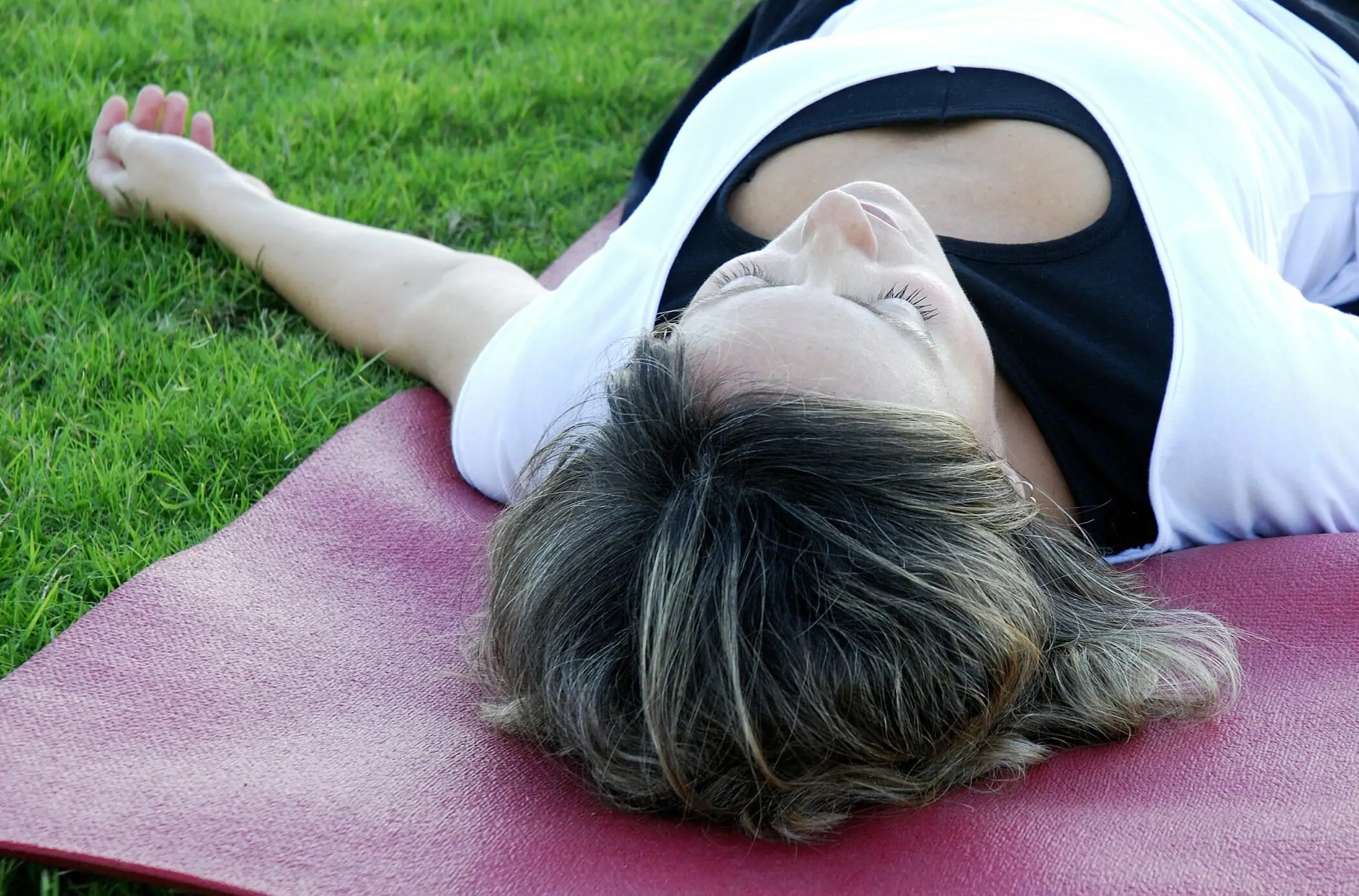
Art of Breathing in Savasana
Control of the breath is necessary for good relaxation. Rhythmic breathing at the beginning helps one to relax. Inhalation should not be deep but should be of normal duration. Exhalation, however, should be longer in duration than inhalation. During inhalation as well as exhalation, the brain cells should be made to descend towards the centre of the emotions. This downward movement is more difficult in inhalation than in exhalation. For about three-fourths of the duration of inhalation, one can experience the descent of the brain cells, but for the last one-fourth of the period of inhalation, there is a slight upward movement of the brain cells. This upward movement should be avoided. Inhalation reflects the dominance of the ego, while exhalation denotes the surrender of one’s ego to the divinity surrounding us. Exhalation empties the brain of the ego. The surrender of the ego in exhalation is accelerated when, after a period of slow and smooth exhalation, there occurs what might be described as “echo exhalation.” This is a fine and subtle exhalation and may be likened to the exquisitely pure and delicate notes of a string instrument in the hands of a master musician, which seem to echo gently from nowhere. This “echo exhalation” empties the brain completely of the ego and results in the withdrawal of the nerves and senses within oneself.
Conscious and deliberate surrender of the ego is hard to achieve. That is why the Yoga texts recommend thinking upon the name of the Lord whilst practicing Pranayama. The practitioner them feels that the course of all energy is entering within him with each breath, while he is surrendering to the Lord his very life-breath, his very ego when he is exhaling. The Self is pure consciousness. When the brain, “the intellectual centre,” is active, the mind reveals itself as intelligence. The mind appears as the Self in the centre of the emotions when the brain is perfectly quiet and the intellectual centre is stilled. Here one is gathered up and yet suspended, empty yet perfectly satisfied, serenely balanced, neither free nor bound. There is stillness in pure awareness. The awareness of the “I” is transmuted into awareness of the Creator. There is emotional stability and mental humility.
Signs of a good Savasana
There are several signs of a well-performed Savasana. A few indications may help the beginner to test the depth of his relaxation. Yoga is not an intellectual game. It is a sharing of real experience. In a good Savasana there is a feeling of shrinkage of skin and muscle, for Savasana is after all movement of inward withdrawal. There is at the same time a feeling of elongation of the limbs and body. Sometimes, this elongation is experienced in the upper arms just above the elbows and in the calves just below the knees. At these four places, one can experience the pulse beats at these places, and the balance of the body can be tested by watching the evenness of the pulse beat. A feeling of being suspended on a thin line of awareness is also present.
The best sign of a good Savasana is a feeling of deep mental peace and pure bliss.
Savasana is the alert surrender of the ego. One discovers oneself in forgetting oneself!
This story was originally published in Yoga Rahasya, Vol.4, No.2, 1997.
